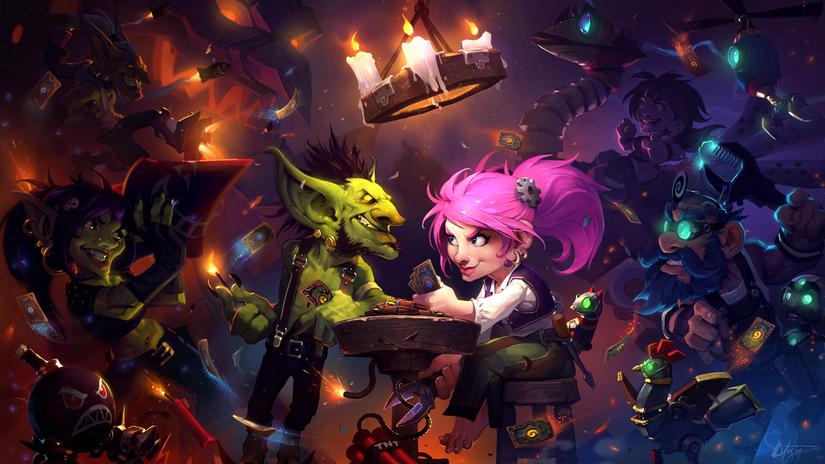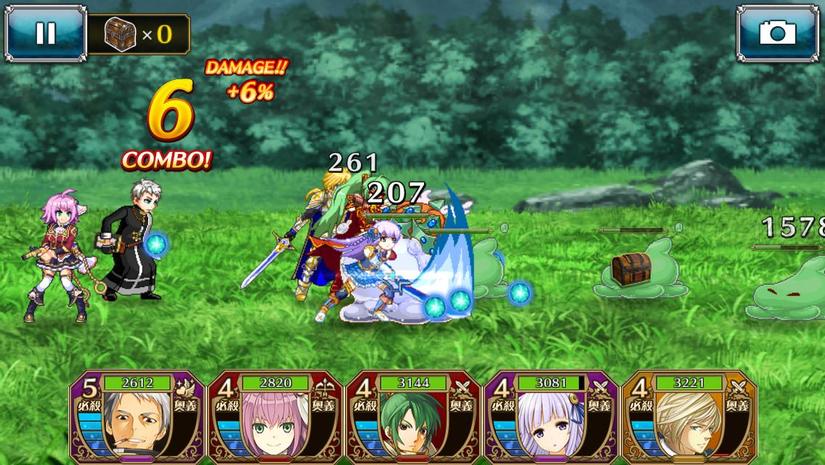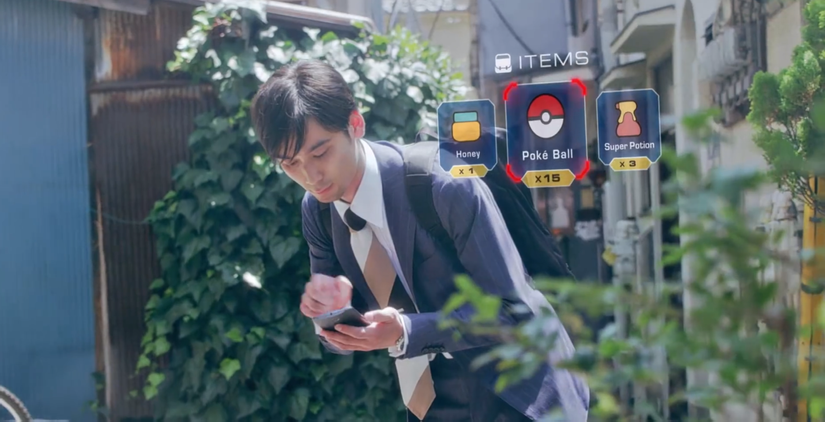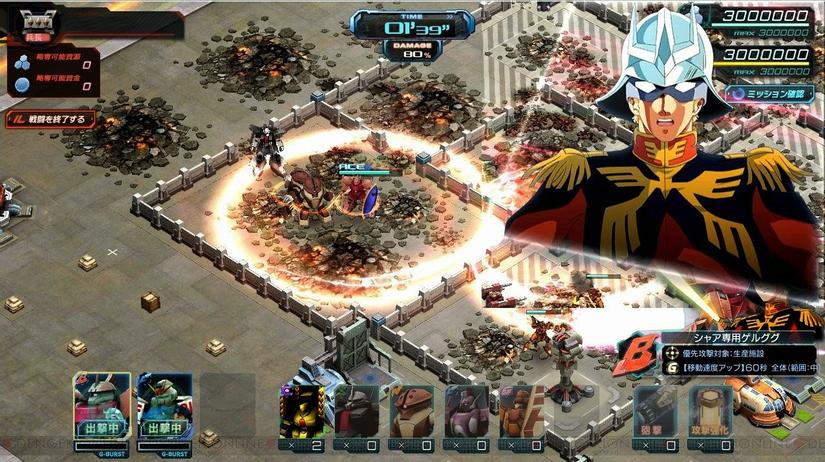Social Mobile Games, history and success
Bài đăng này đã không được cập nhật trong 4 năm

Introduction
Games, as a way of entertainment has always existed in humanity’s history in one form or another. Everybody play game with each person enjoy different kind of game, some games help develop practical skill or otherwise perform an educational or psychological role.
Video game is a kind of game created with computers, allowing its creator to navigate players through a virtual space, usually with input devices. Since its creation many kinds of video games were born, in example action games, strategy games or role play games, with some of them new ones still in the development.
Video games industry and gaming on smartphone
I. Video games industry
Since 1970, the video game industries have grown from focused markets to become mainstream. They alone took about 9.5 billon US dollars in 2007, and as of 2014, their revenue increased to 46.5 billion US dollars. At the time of birth, the main market targets were personal computers, with creations of dedicated game consoles, the market expanded, now reaching many other electronic devices.
II. Gaming on smartphone
Smartphone, also can be called a device with mobile Operating System, a combination of multiple technological features such as media player, GPS, touch screen and camera packed into a form of a mobile phone. Since 2007, with the birth of iPhone, one of the first smartphones using a multi-touch interface, they quickly become extremely popular, with 139 million devices sold worldwide. It is estimated that at the year of 2015, one in four people is owning a smartphone, that’s 25% of world’s population with about 1.75 billion of people, and half of them are gamers. Needless to say, smartphones quickly become a widely used platform for gaming, with the game’s market on mobile are getting bigger each year, reaching 15 billon dollars as at 2014, taking 20% of overall global games market.

Social games and Free to play game model
I. Social games
Commonly being referred to games that allow or require social interaction between players. In the last years they are taking a new form, being specially referred widely as mobile online games.
Originating from Japan, they quickly become the most popular genre of games on mobile, making 1.5 billon dollars in 2014, especially popular in the country of origin, Japan, their popularity later were spread, and many of those were later translated and released worldwide, with titles such as Puzzle & Dragons, Candy Crush, Deadman Cross, Brave Frontier and Tera Online.
II. Free to play social games
For short F2P, a term used for games that have no cost required for a player to start playing. It is not a new genre, but a deep revolution, affecting most aspects in the game industry: marketing, publishing, designers and developers. It is stimulating the industry after a slow-down, gives the game producers the opportunity to create a new gaming experiences for players.
A free to play game doesn’t require its full content to be created before its release, but most of them are gradually created after the game launch. Nexon estimates that a free to play game can be released with only 50% of its final content, with Playfish, the percentage may fall as low as 20 percent.
One of the reasons which explain the low initial is investment, the technologies used are simple and inexpensive, and also, since the game is free, players aren’t as demanding as of those needed to pay, still the cost of production will likely rise as the game grows larger.
III. Differences between Traditional and Free-To-Play games
In traditional games, designer’s concern is mostly about entertaining players, whereas in a F2P game, the focus is both on player’s entertainment and his monetization, the following quote is from Jamie Cheng, founder of Klei Entertainment, is best to illustrates the difference: “Don’t make people pay for entertainment, entertain them so that they will pay.

The keys for successful F2P Game
I. Immediate satisfaction
The fact that F2P game is free removes a major obstacle for a player to experiment with it. However, it creates a new challenge which is how to persuade a player to continue playing when it is so easy to switch to another F2P game. This problem doesn’t occur much with the purchased game, which binds player to it at the moment they buy. Since they have invested money in this game, they will not likely abandon it in a few minutes if the first impression is disappointing, which could happen, but much later. But if the game is free, the bind doesn’t exist anymore, if the game, which doesn’t cost a cent, doesn’t bring immediate satisfaction, they will abandon it and switch to something else. Therefore, the first design challenge is to provide immediate satisfaction to the players in order to “hook” them up.
II. Immediate access
The game should be launched as directly as possible, the more steps player has to follow in order to access the game, the more chance of losing him, which is why Facebook games are successful. The registration is not needed, to enter a game player needs only click at it.
The way most of modern F2P games to make games easily accessible is by allowing player to play immediately after entering the game, if they find it interesting and keep playing for a long time, they will have a choice to save their progress to the game’s server, allowing them to load it up later on any device the game is available on.
III. Guide the player
The player will be quickly discouraged if being dropped in a game he is not familiar with, many F2P games guide player through first steps of the game basic actions by limiting the advanced functions, easy access to a game means easy use of its features.
It is best to create a tutorial that lets player games familiar with the game mechanics, but not dwell too deep into its advanced features in the first place, the player has to have a satisfaction with his first steps, let him understand and win quickly, also giving players free rewards will encourage them greatly for them to continue their progress in the game.
IV. Easy to Use, easy to Understand Interface
The interface must be easy to understand for the players, especially casual players, the main controls must stand out and centralized, the players must see what they do at the first glance. The menu should have explanation for each command if available, usually through a roll over or label.
Obviously, interface wording should be simple and easy to understand, especially for mobile devices with limited screen space, they should be as clear and easy to use as possible.
V. Play a little at the time, return for a long time
This is called retention, a distinctive feature of F2P games, those games are specially made so that they can be played in a very short time but very often, could be during several months or even years in the best case. The reasons are:
-
To create frustration in player, stimulate him to purchase items that would let him continue playing, most of F2P games while are free, they limit player actions he can do in a period of time. If said actions are running out, the player would have to wait for the actions to be renewed, or purchase an item that would immediately let him continue playing, this was proved to be very successful, especially during “events”, which give player a chance to get much more than normal.
-
To motivate the player to log in everyday, logging in to the game every day will reward player with in game items, consecutive logging days will give them even better rewards, failing to log in daily will remove them from getting the rewards, ensuring they will be logging in at least once per day.
-
Mandatory tasks, to fight boredom, F2P games often entail repetitive actions, they could be daily tasks which player must complete to get the rewards. Those tasks change every day, with a new mechanic should be introduced now and then, to not make them too boring. Events should be often organized even if there is not much of occasion for them (in example Christmas or New Year), the player will be much more hyped knowing they can get out much of every in game event.
-
Interaction with friends. The success of F2P game rely much on its society, since often called Social Game, the game must encourage the player to draw his friends attention by inviting them to join, especially with every invitation, they will get free rewards. This not only will increase the number of players, but also remind the existing player and motivate him to continue playing for his friends. As a result, the player no longer plays for his progress but also for someone else’s. It is also important to remember not go too far in to interactions, since a number of player prefer to play alone, it is important to understand them and make the game still rewarding, even if they choose to enjoy the game by themselves.

Making money with F2P games
I. Buyers’ Motivations
Speed up leveling or get access to new features. F2P games are designed to create never-ending needs, the game give players enough resources to start kick in and discover what it has to offer but limit continual plays. It is important to understand that player should have an easy access to the game contents for at least 20 first hours, at that time the player shouldn’t have to buy anything, they will be rewarded for every action they do and will progress in the game very quick (in example, the first 20 levels of the game can be very quickly achieved). After that time pretty much every player has already decided to continue with the game, and at this moment the player are ready to pay for following possibilities:
To ease one’s game experience, most of players would prefer not to indulge much into the grinding, repetitive part of the game, but to quickly pass them while still being able to increase own in game’s statistics. To feed one’s ego. Most of players will always have satisfaction from getting higher than the others, to display themselves at the best, their personality or to impress others. To achieve that they often use money to have faster access to better in game units, more money means quicker access.
II. Understand the needs
Now, not all the players are ready to pay for the games they are playing, some of them in example students, will not have much money to pay for the games, it is important to remember about them, giving them a chance to access a high end in game units even if they don’t pay. These players can even the odd with paying players by playing more, doing more tasks, or participate in more in game events. Moreover, they may be not directly be involved with game’s profits, but at the result of them continuing the game, the game’s society will continue to exist and maybe even improve. Do not make their game experiences harder than it was meant to be in the first place, it will greatly discourage them from further playing.
III. Limit the in game purchasable items
Even though many developers wanting to put as many purchasable items in their games, may they be resources, customs, comfort items, game modules or collectible, it is for me better to keep them simple, which is limiting the purchasable items to one. With that one purchased item the player could choose to upgrade his own statistics, or one of the listed items, or participate in in-game’s lottery which will be described below.
This will not only simplify the game, but also the player won’t have to think about what they have to buy among a long list, but what they will do with the bought item. Of course, said purchasable item should be obtainable also by finishing in game tasks, the player will just be able to get them much faster, or even without having to finish mentioned tasks.
IV. Randomizing the chances
The paying players should not be able to access high end units just be purchasing them, they should be obtainable both by paid and unpaid players, by chances. When player buy an in game item, these items should not be instantly powering them up, but giving them a chance to power up, by participating in an in game “lottery’s draw”.
Like in real life lottery, one can get quickly rich depending on so called “luck”. Said lottery’s draw should be accessible to both kinds of players, the paying one can “buy” themselves a chance to draw a lottery, every time they wish to, with the unpaid players will have to work for a chance.
The unpaid player could get “lucky” and obtain a very strong in game unit in their first try, in the others case, most of them will be continuing their free play style, and work harder until they get what they want. Or they could get frustrated and upgrade to the paid players for quicker result. There is an interesting thing to remember, the player will be less likely to leave the game even if it is frustrating after the first 20, 30 hours of play, since they are already so far into the game and they would not want to leave it without any satisfactions.
Now for the paid players, even if they manage to get what they want in the first try, the satisfaction of getting strong units will prompt them to keep going, this is so called a “gambling syndrome”, where with the winning, players will keep going for higher wins, the frustration of them losing will keep them going until they can’t anymore, an interesting fact about human’s nature. As much as abusing human’s weakness is quite … harsh for my consideration as a game developer, this simply can’t be avoided (my own two cents).
A few things to remember about
-
Design the game in a way that a lot of contents could be introduced later on so that the players would want to keep coming back.
-
The players must be able to play the full game without spending real money.
Advertising
I. A few words about advertisements
Players usually accept advertising in a F2P game, or… not really, the players usually become much demanding with their games nowadays, even if they are free. The ads could easily diminish the game’s experience, cut out the continuality of the game while they have to watch the ads every now and then. Although there is another way of advertisement that could encourage player for further play.
II. Collaborations
If the game becomes popular, it could use its popularity to promote other popular games, both publishers will participate in a so called “Collaborations”, which will involve in both side adding contents belonging to another game, in a form of character. In example, game A will add a new contents, like an item, or well-known character from game B, and game B will also add alike contents from, but from game A. This will give both developers an equal chance at profit, and players, a chance to try both games, increasing their popularity.
The game’s life
I. The technology
A software cannot be created without a technology, simple thing, now to create a game, the developers would need a technology called a game’s engine. There are many game engines available in the market, the differences between them are the prices, the devices they could build games into, and their own “ways of using”. With the mobile market, one particular game engine comes into mind, called “Unity 3D”, Unity 3D is a game engine allowing to create and build games into many devices, ranging from Android, iOS phones, to Windows, Mac OS or many gaming consoles. Unity is great for developing low budget games, since many game modules are already included, decreasing the production time and costs. Its downside is a very hard to manage structure, especially with the big budget projects.
II. Decreasing the risk
Even with a good idea could not guarantee game’s success, it is important to think about the game’s targeting market. With each market has other demands, be it arts, sounds or game’s mechanics. Of course, marketing obviously has a big role on the game’s popularity.
Now, with the F2P games coming out every day in a batch, there is always a risk of miscalculation and the game doesn’t perform as intended, an important thing to remember about is that while building a F2P game, one doesn’t build only one game, but a template for all upcoming games, which consist of game’s software, logics and servers.
In the case of failing, the game should be removed within the next 3 months, another will be built on its place during that time, with new ideas, arts and sounds, but the basic structure remaining the same. This will give the possibility to launch a new game quickly with very small costs, and the most important, take any experiences from the bad launch of previous game, improving them in the new one. Many Japanese game companies are using this method, and they remain very effective to this days.
All rights reserved